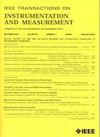水平环形流中液滴夹杂率的实验研究与预测
IF 5.6
2区 工程技术
Q1 ENGINEERING, ELECTRICAL & ELECTRONIC
IEEE Transactions on Instrumentation and Measurement
Pub Date : 2025-04-04
DOI:10.1109/TIM.2025.3557809
引用次数: 0
摘要
液滴夹带分数对环空流动的压降和换热有显著影响。在50 mm水平管道中,利用光纤探针测量了夹带液滴的分数、速度、大小和质量通量等参数,揭示了重力作用下液滴的特征分布和流动机理。其次,通过积分局部液滴质量通量的指数分布,推导出夹带分数。然后,建立了水平环空流夹带分数数据库,对四种已识别的夹带模型进行了评价。这些模型在预测中表现出明显的分散性和不确定性,并且往往局限于特定的流态。为了提高模型的准确性和适用性,建立了预测液滴夹带分数的神经网络,并采用贝叶斯优化方法确定了网络的最优超参数。与现有模型相比,新模型在不同条件下显著提高了液滴夹带分数的预测精度。确定系数R^{2}$达到0.954,预测误差超过82.5%,误差在±30%以内,与实验结果吻合较好。本文章由计算机程序翻译,如有差异,请以英文原文为准。
Experimental Investigation and Prediction of Droplet Entrainment Fraction in Horizontal Annular Flow
Droplet entrainment fraction significantly affects pressure drop and heat transfer in annular flow. In a 50 mm horizontal pipe, the entrained droplet parameters, including droplet fraction, velocity, size, and mass flux, are measured by an optical fiber probe, revealing the characteristic distribution and flow mechanism of droplets under gravity. Next, the entrainment fraction is derived by integrating the exponential distribution of local droplet mass flux. Then, a database of entrainment fractions in horizontal annular flow is established to evaluate four recognized entrainment models. These models exhibit significant scatter and uncertainties in their predictions and are often limited to specific flow regimes. In order to improve the accuracy and applicability of the model, a neural network is established to predict the droplet entrainment fraction, and the optimal hyperparameters of the network are determined by the Bayes optimization method. Compared to existing models, the new model significantly improves the prediction accuracy of droplet entrainment fraction under different conditions. The determination coefficient $R^{2}$ reaches 0.954, with over 82.5% of prediction errors within ±30%, showing satisfactory agreement with experiments.
求助全文
通过发布文献求助,成功后即可免费获取论文全文。
去求助
来源期刊

IEEE Transactions on Instrumentation and Measurement
工程技术-工程:电子与电气
CiteScore
9.00
自引率
23.20%
发文量
1294
审稿时长
3.9 months
期刊介绍:
Papers are sought that address innovative solutions to the development and use of electrical and electronic instruments and equipment to measure, monitor and/or record physical phenomena for the purpose of advancing measurement science, methods, functionality and applications. The scope of these papers may encompass: (1) theory, methodology, and practice of measurement; (2) design, development and evaluation of instrumentation and measurement systems and components used in generating, acquiring, conditioning and processing signals; (3) analysis, representation, display, and preservation of the information obtained from a set of measurements; and (4) scientific and technical support to establishment and maintenance of technical standards in the field of Instrumentation and Measurement.
 求助内容:
求助内容: 应助结果提醒方式:
应助结果提醒方式:


